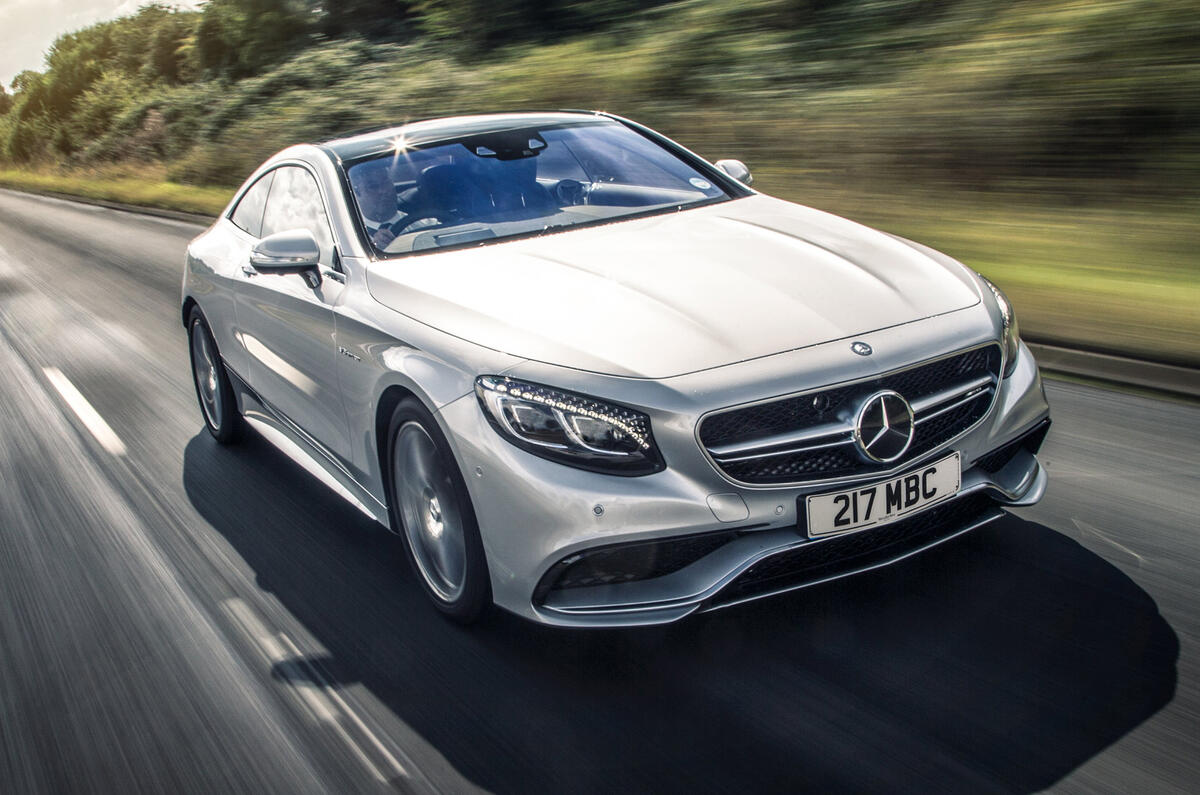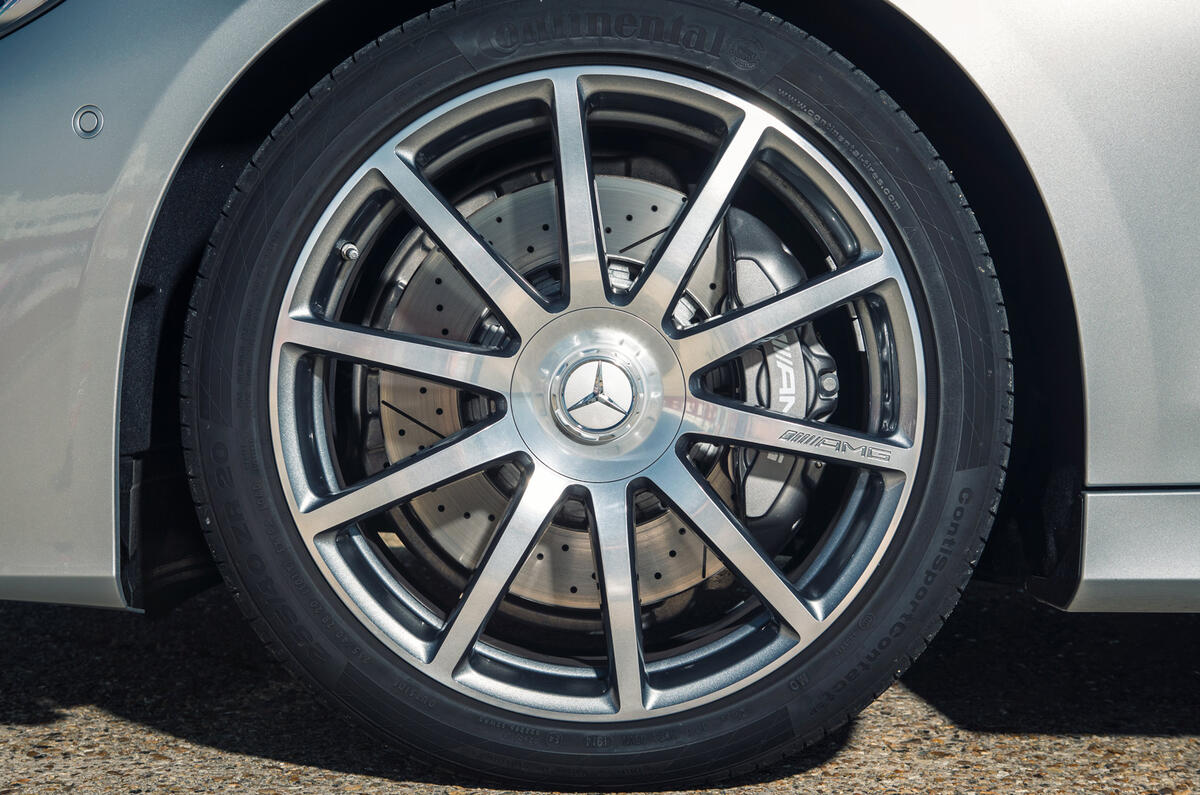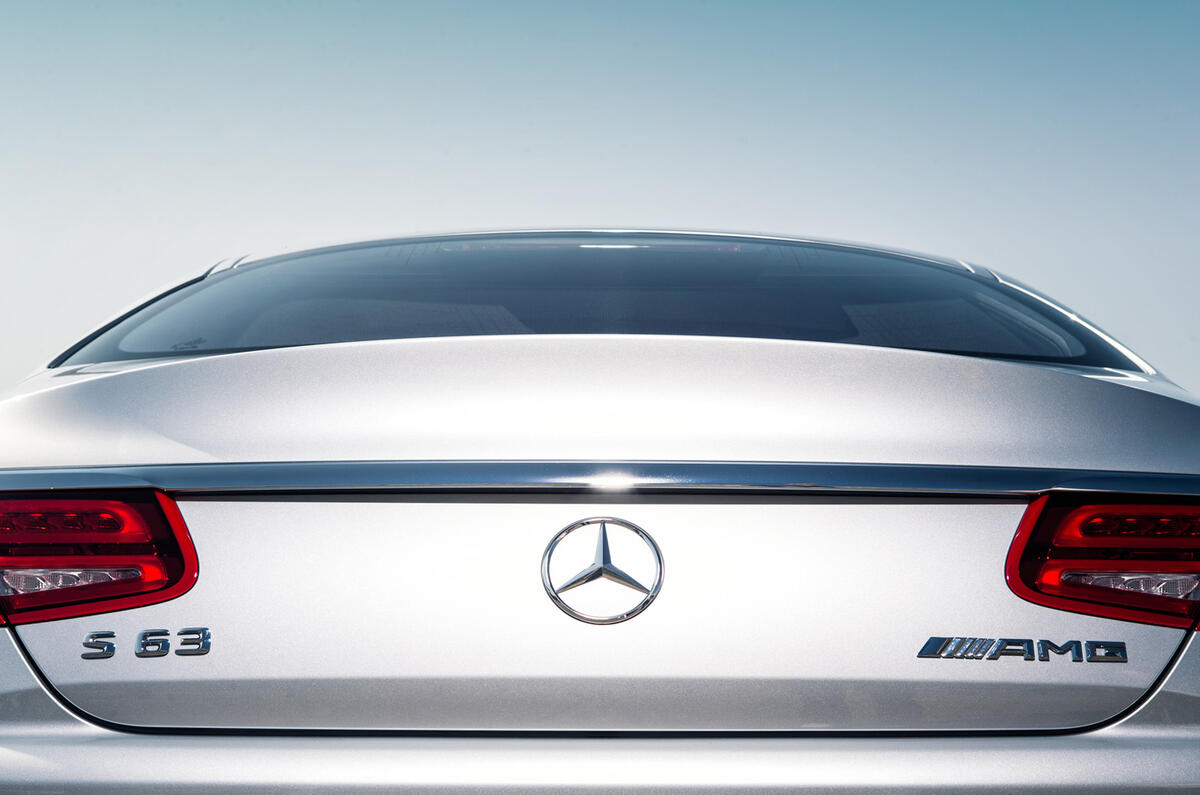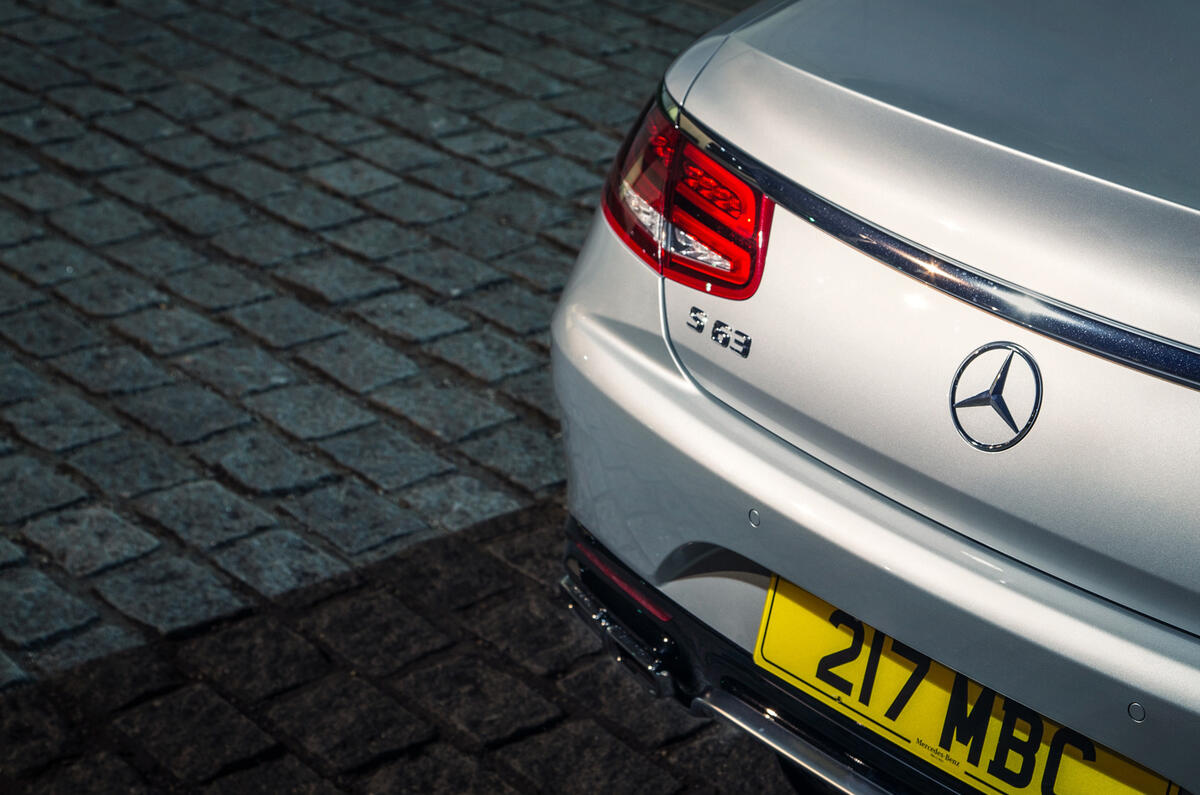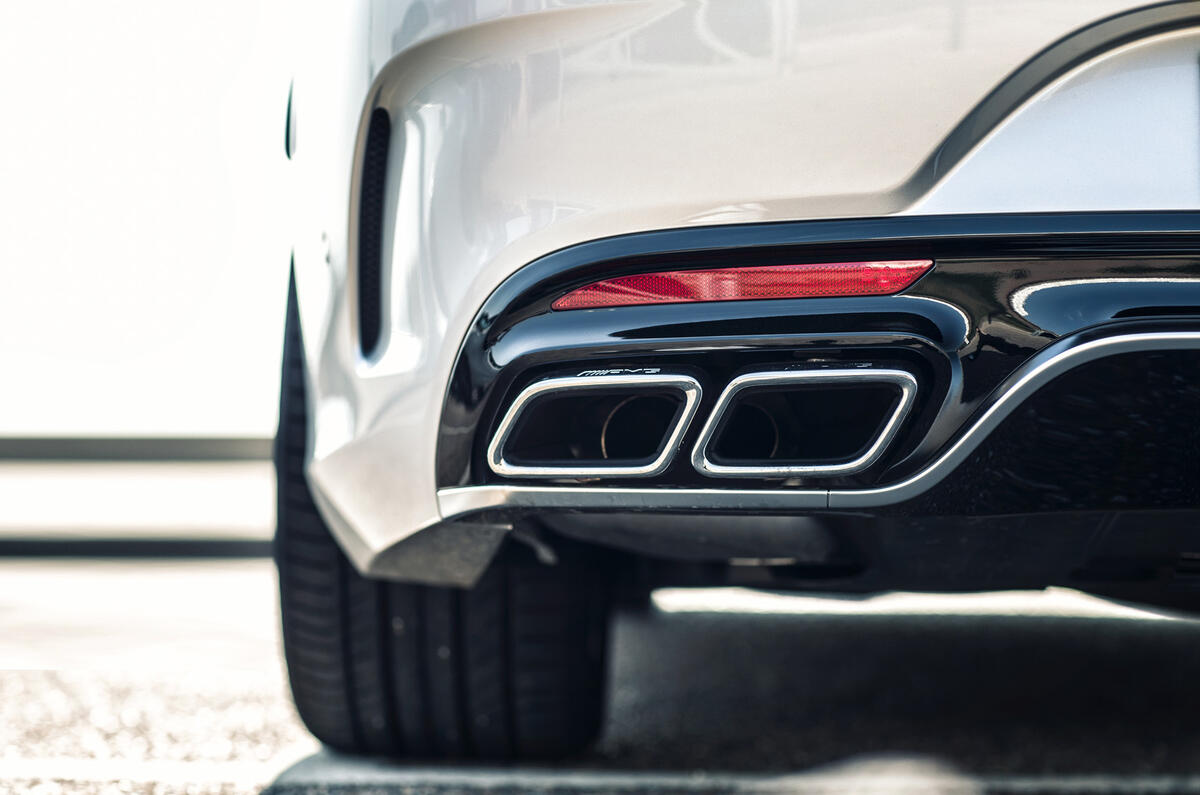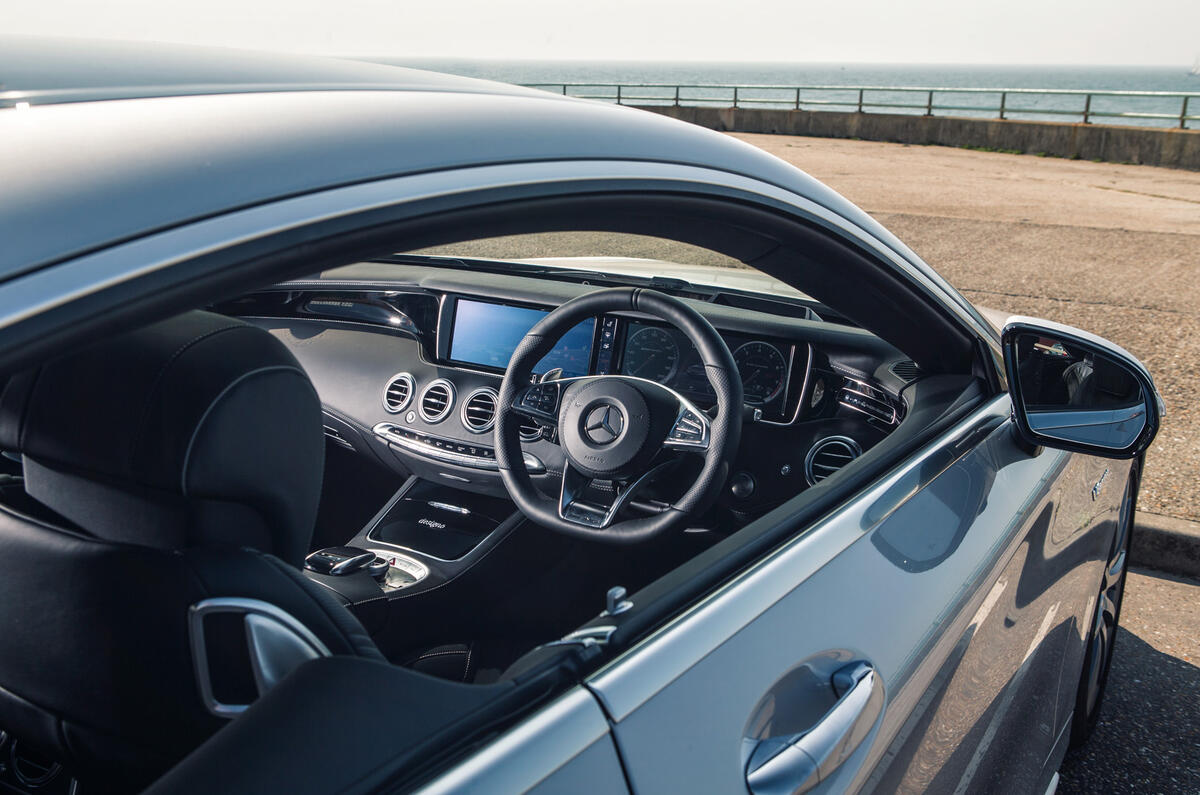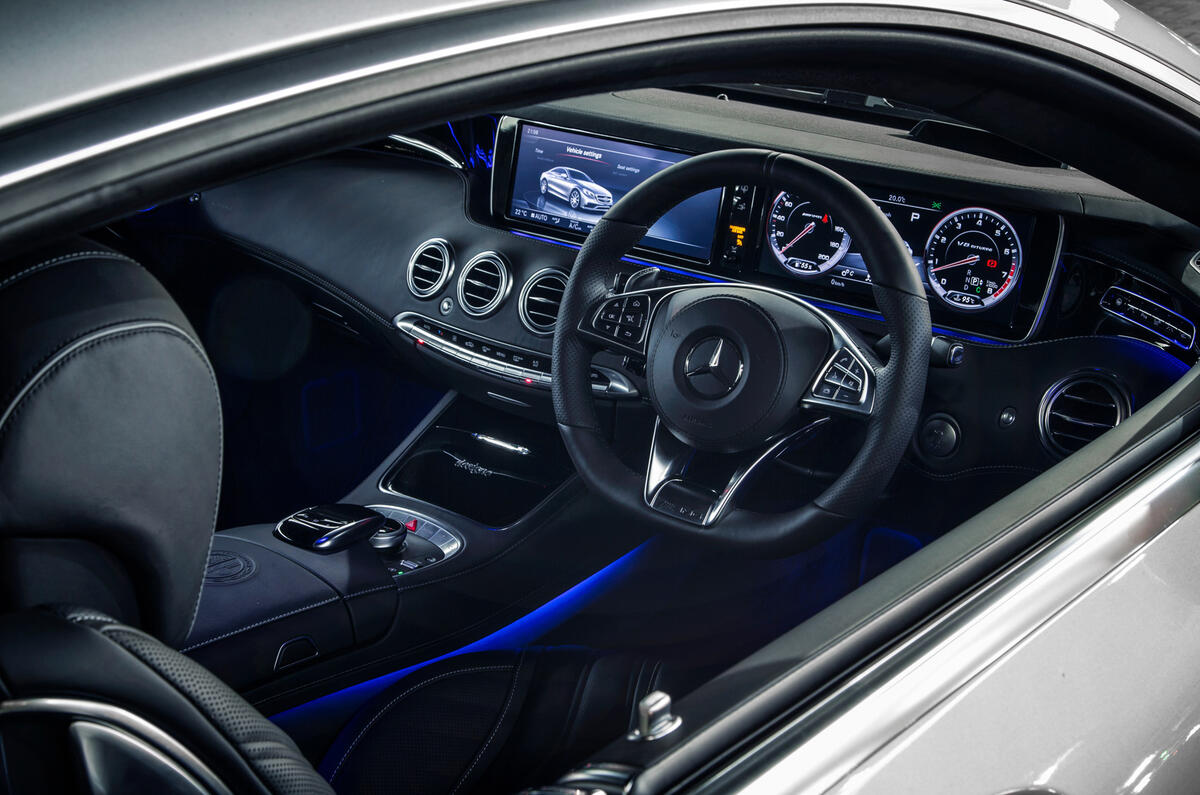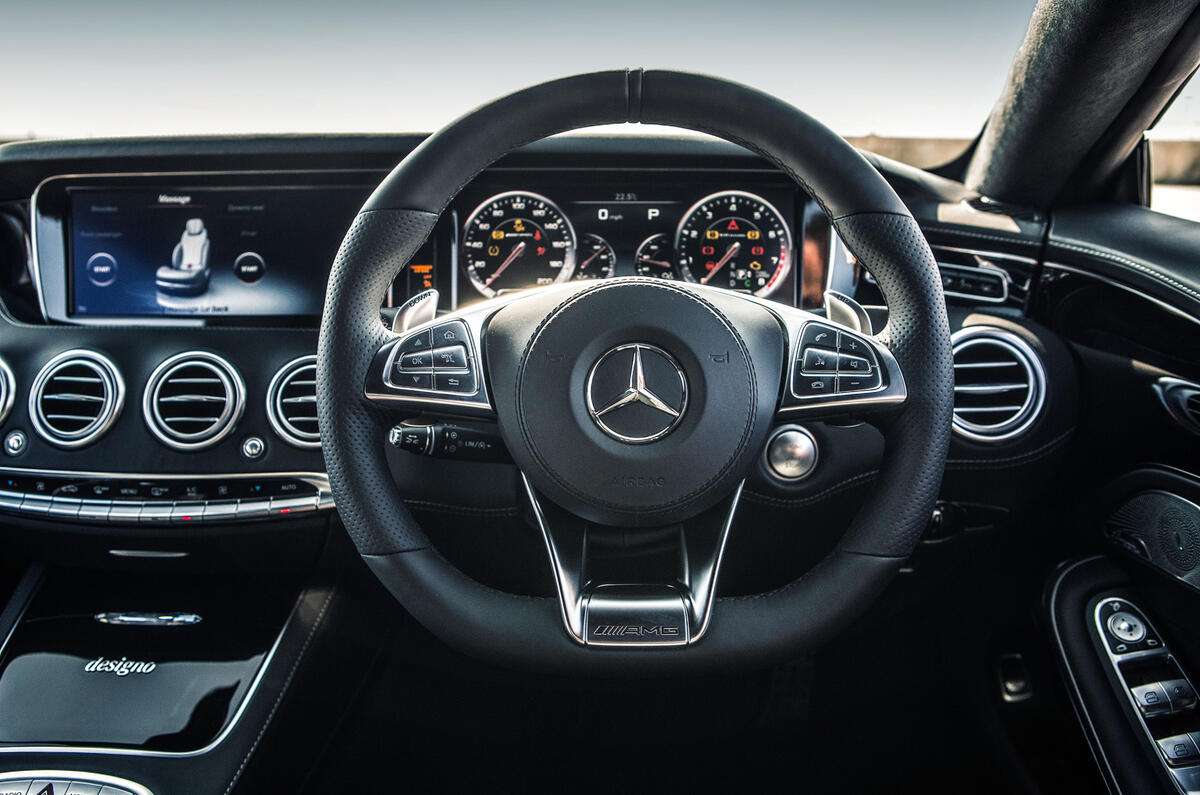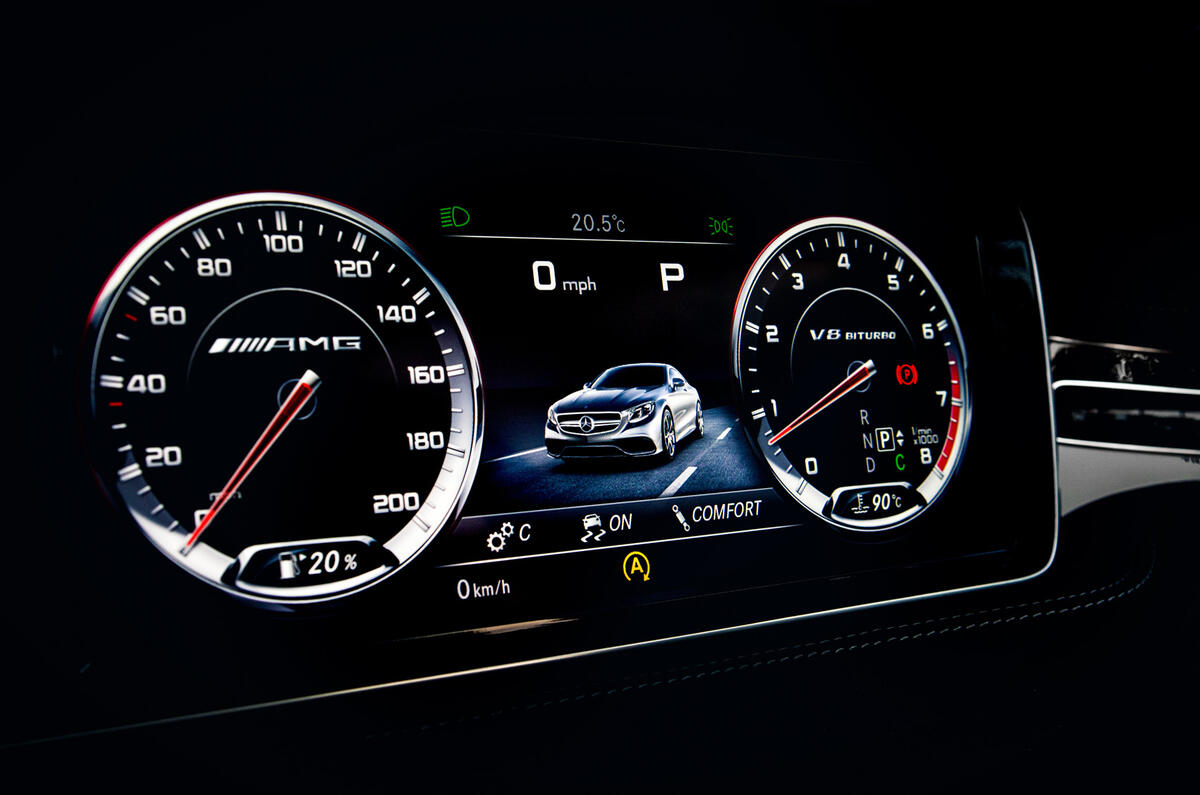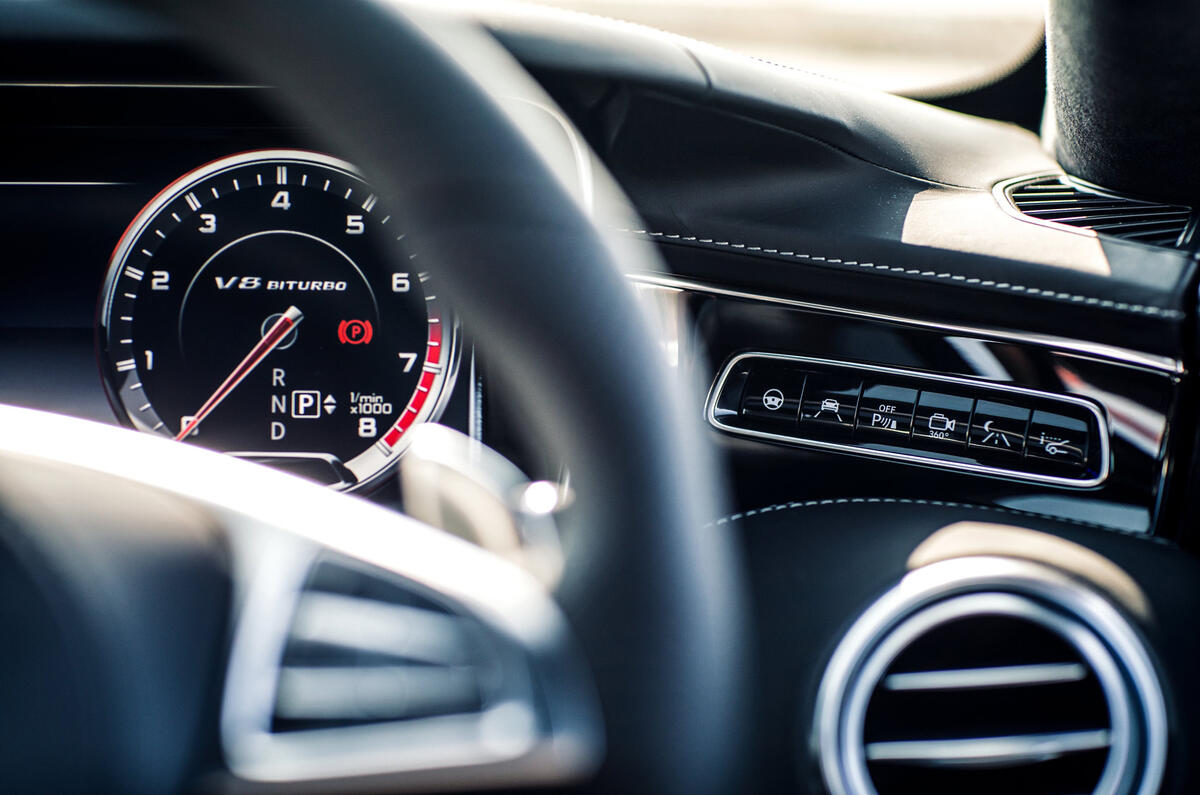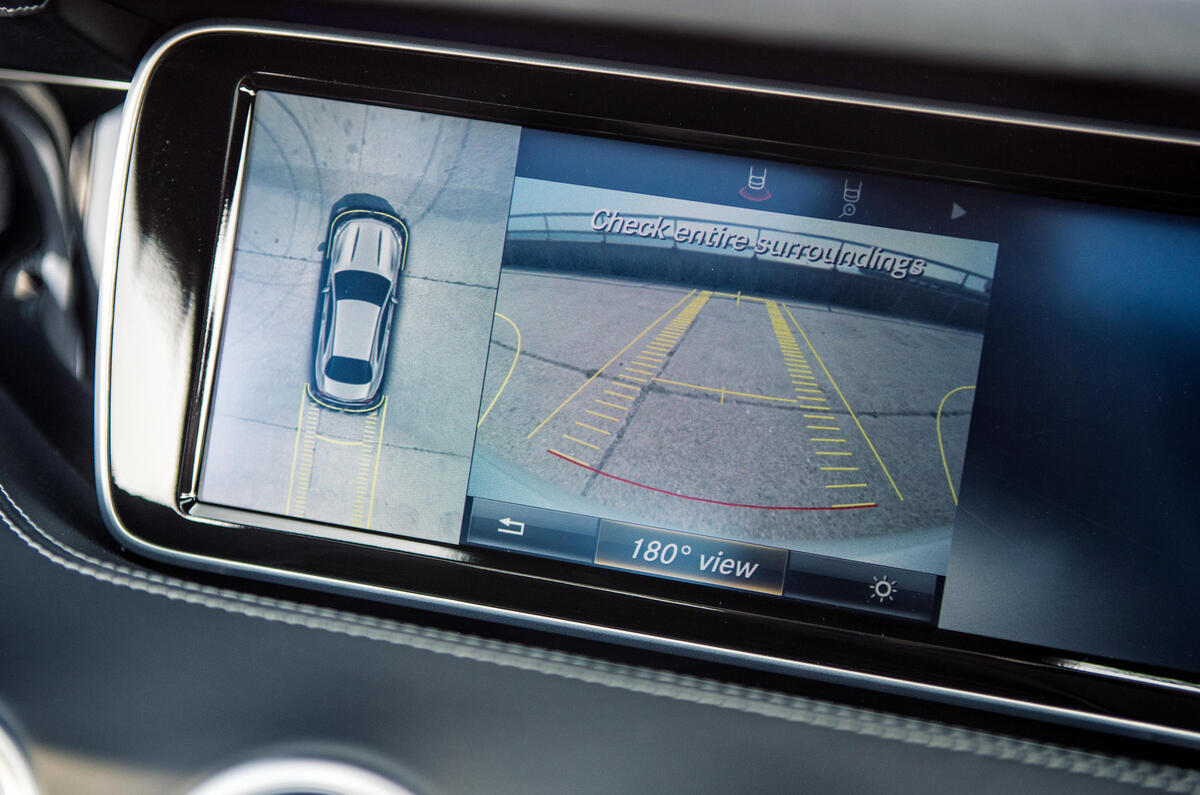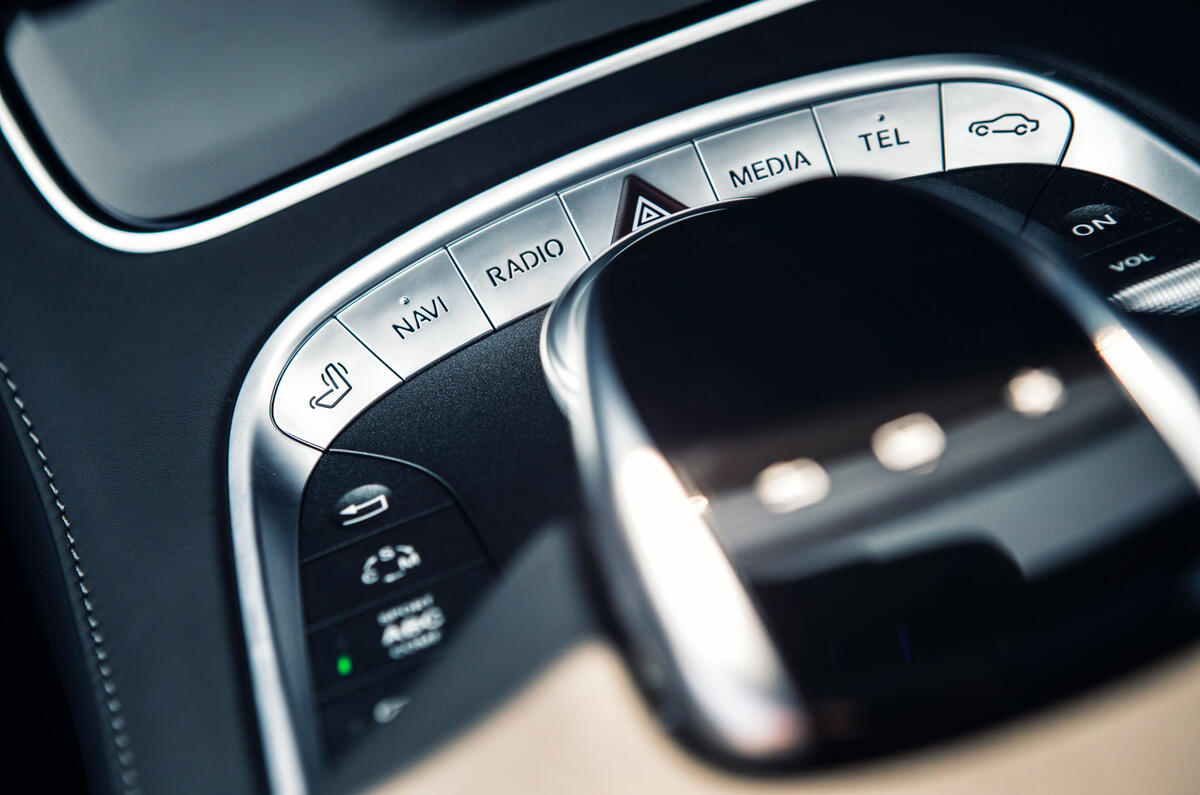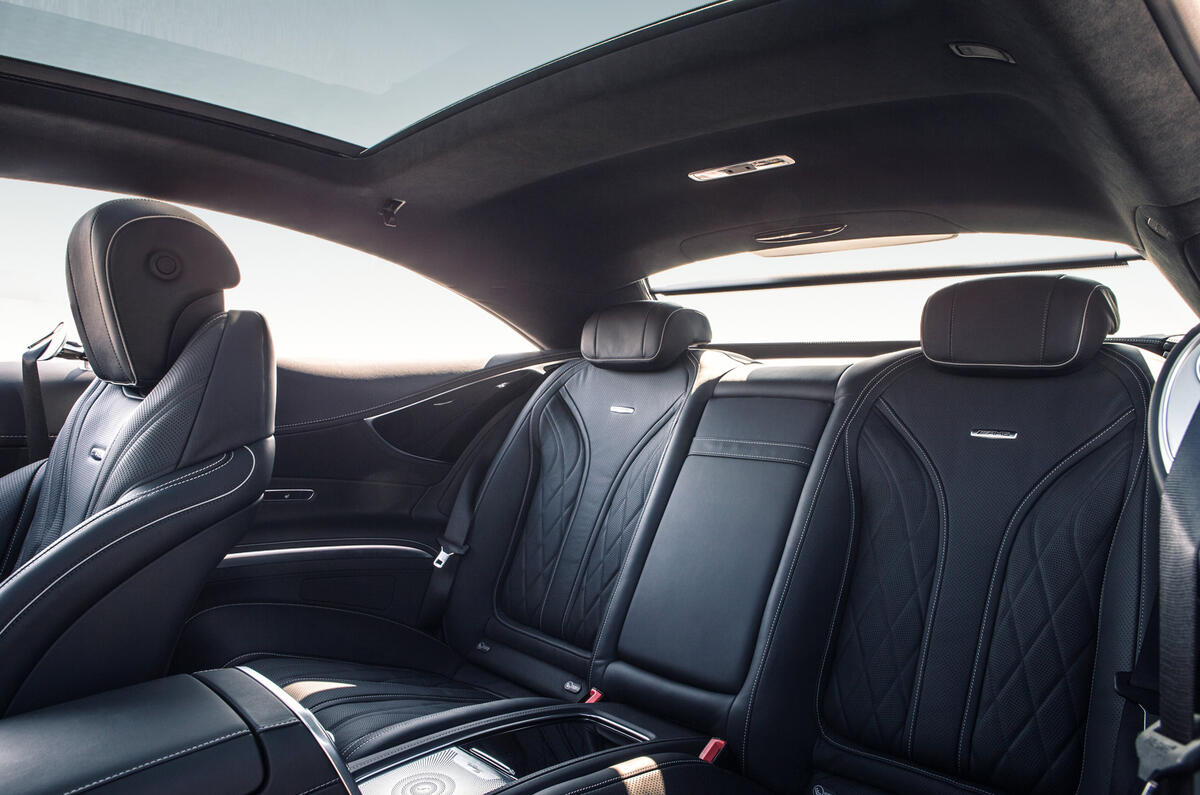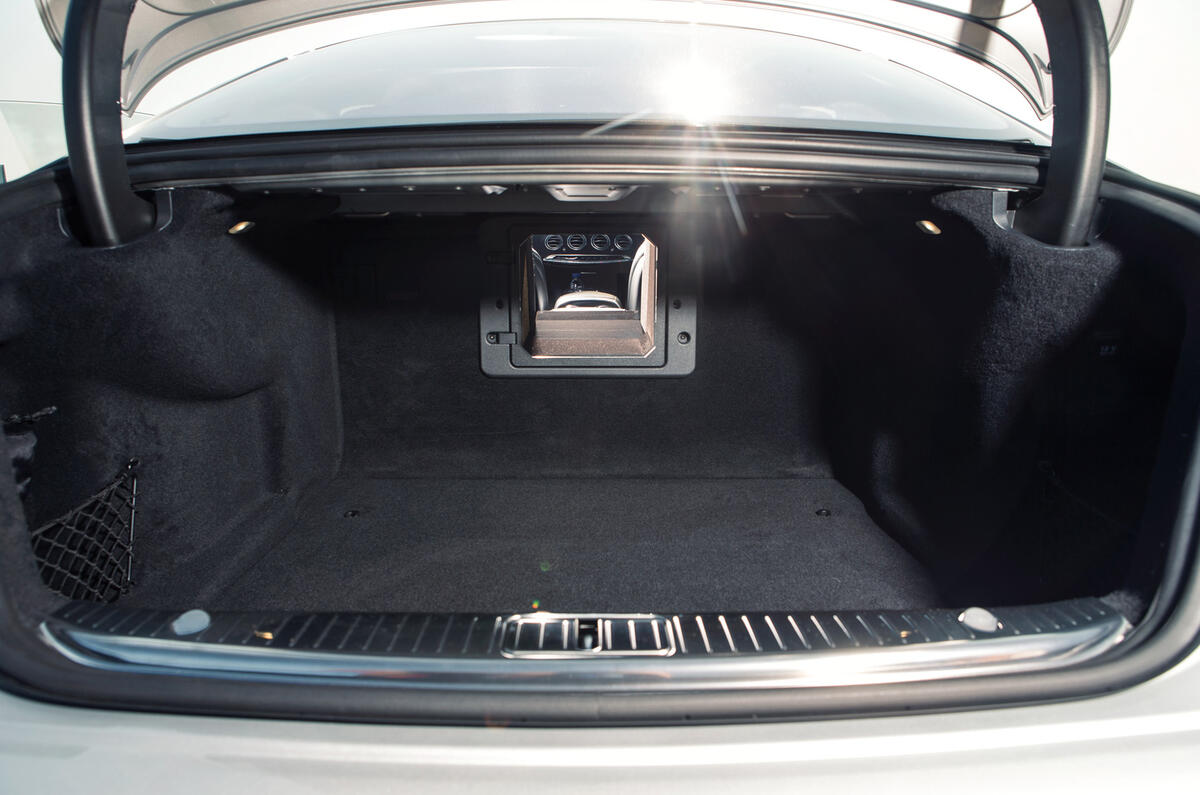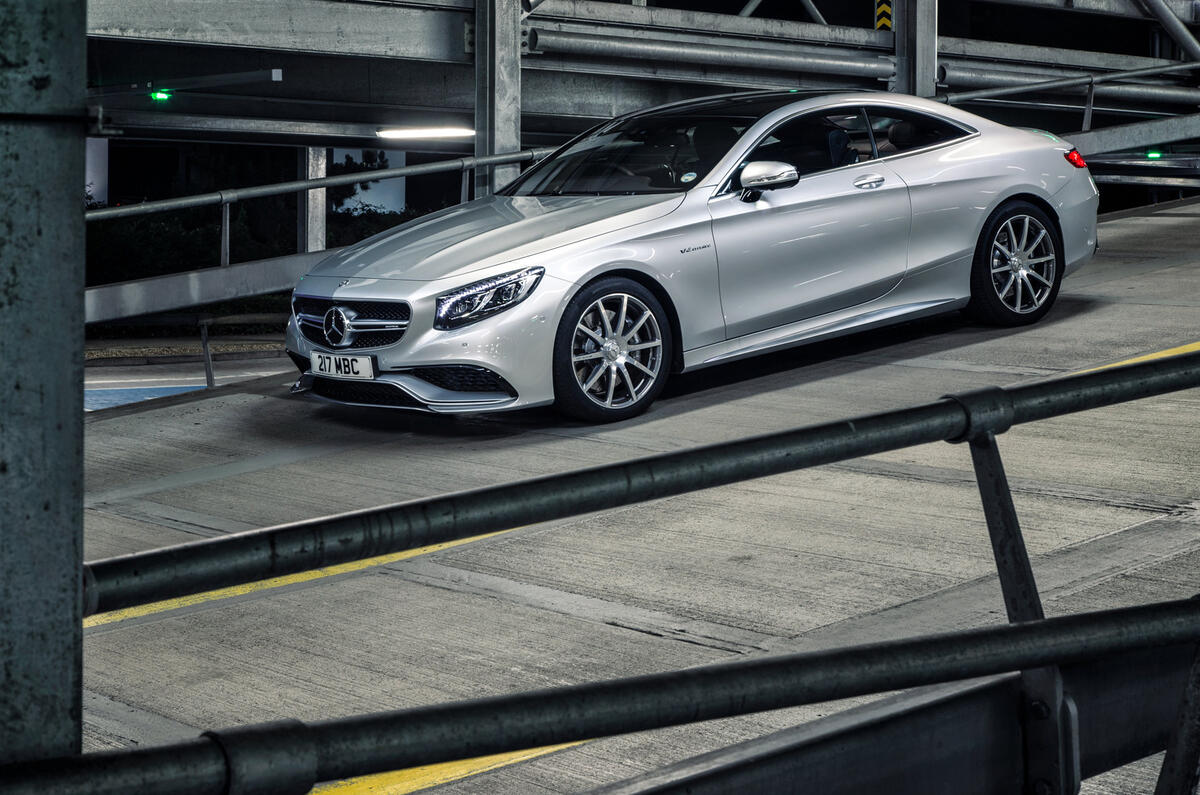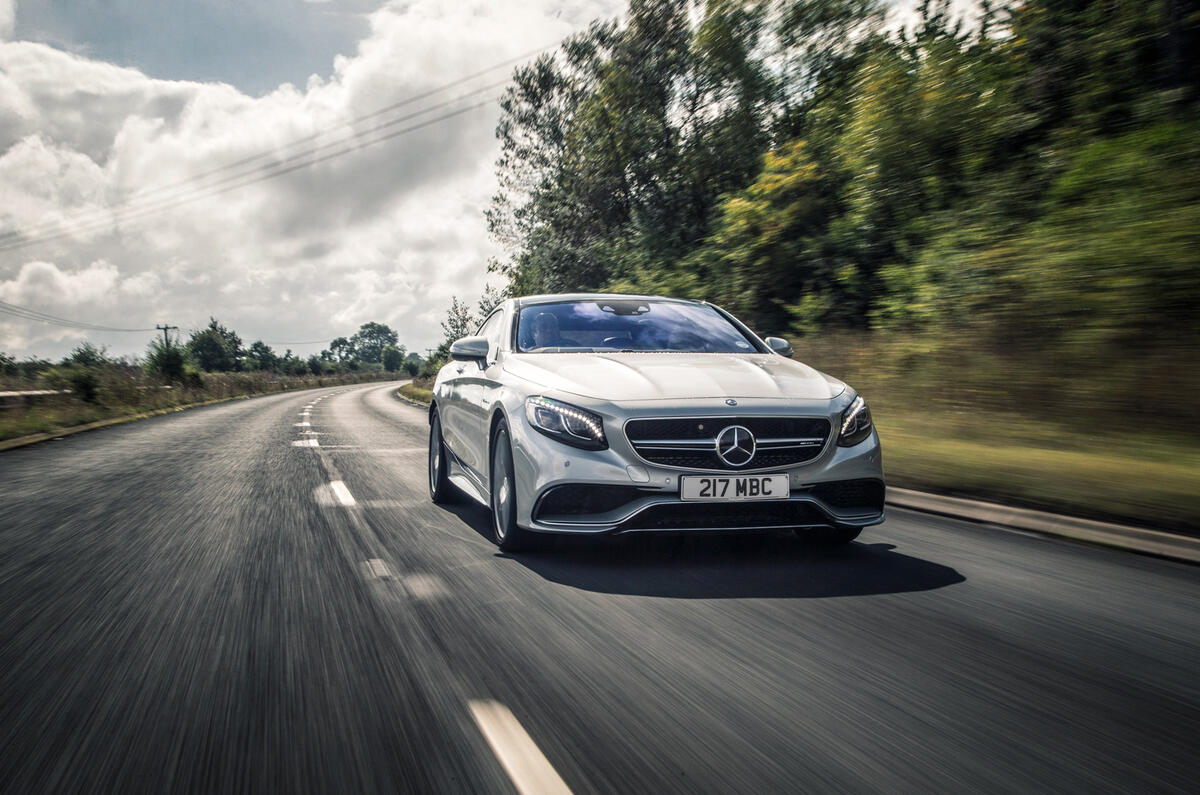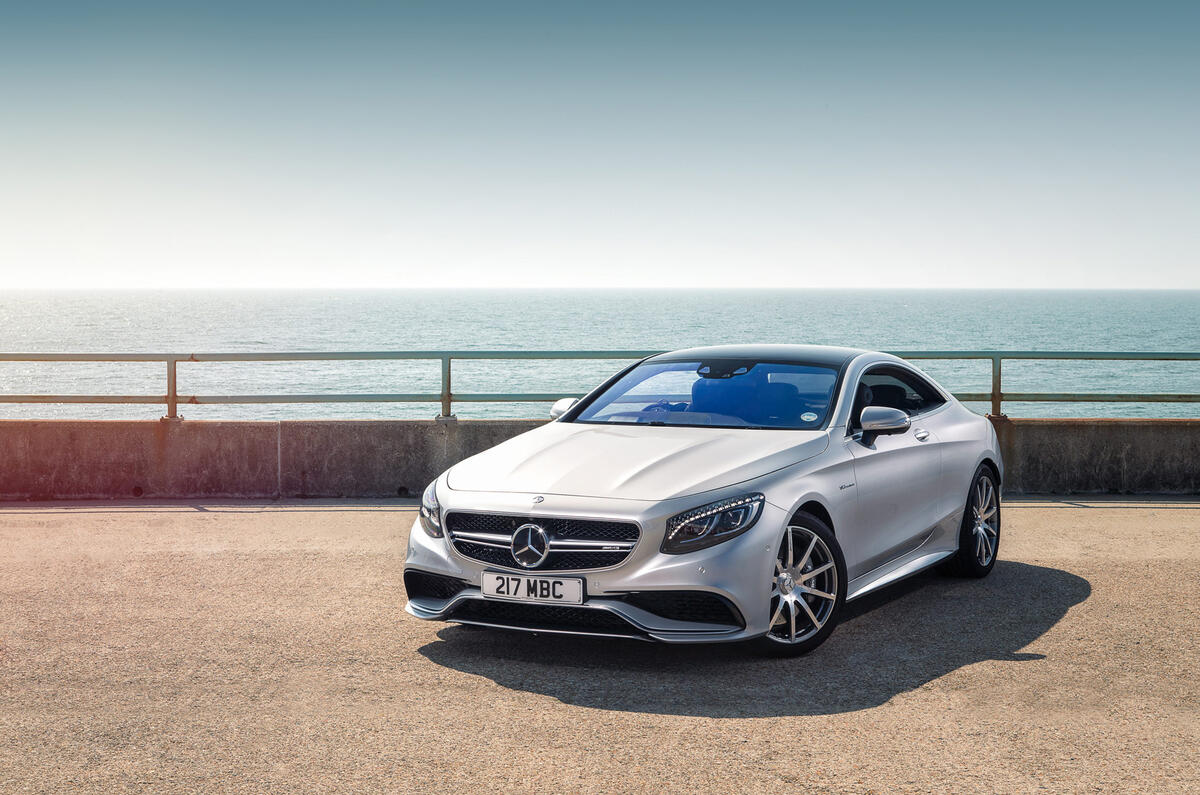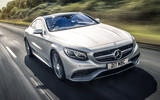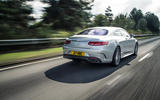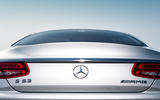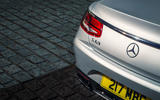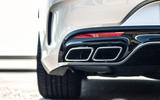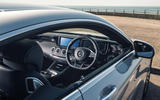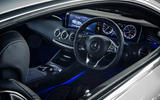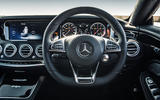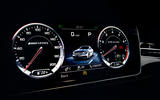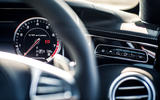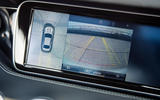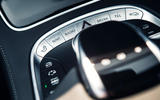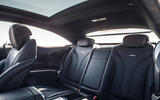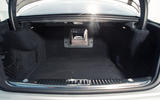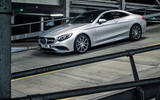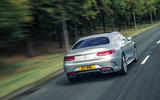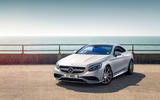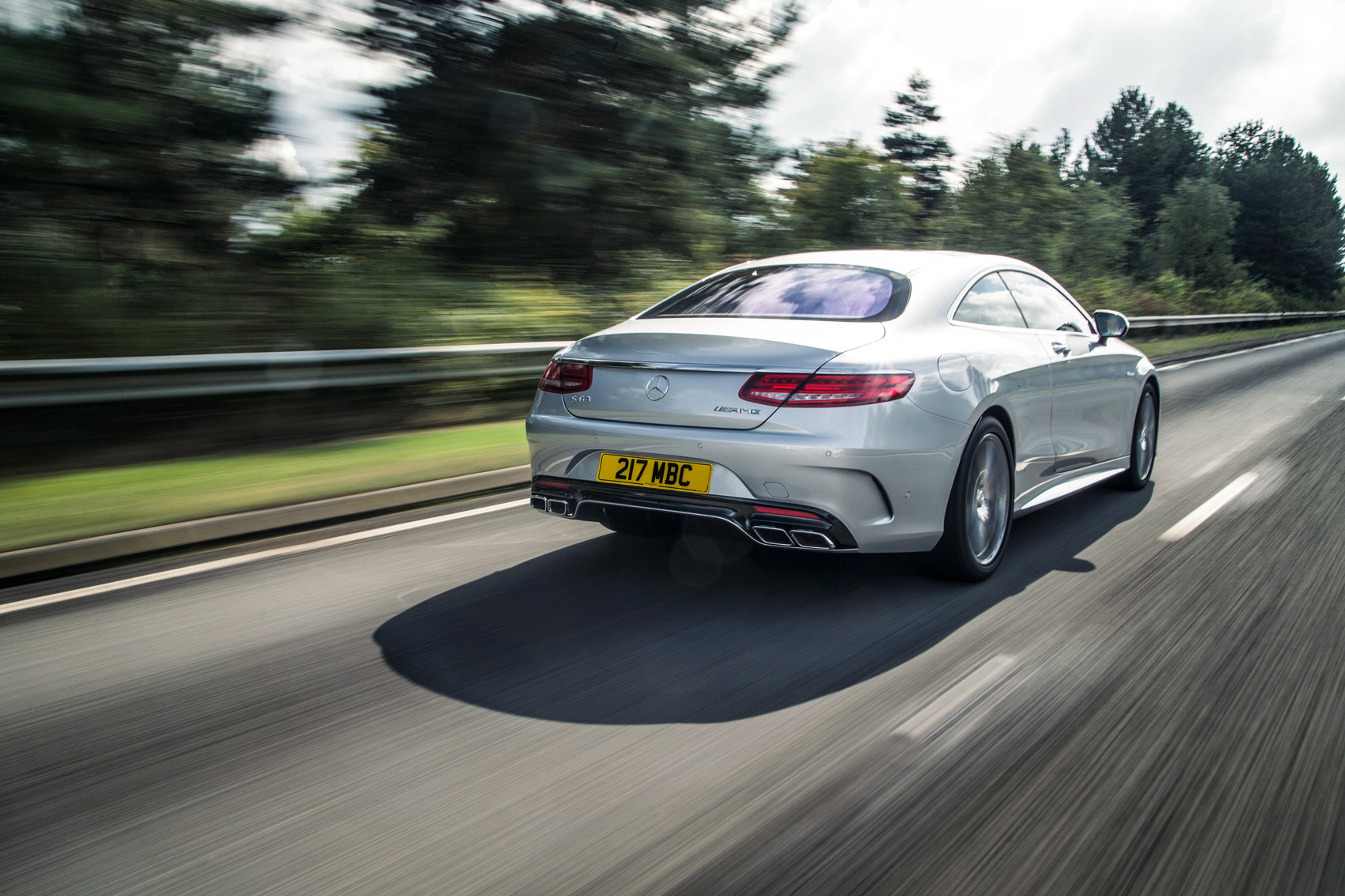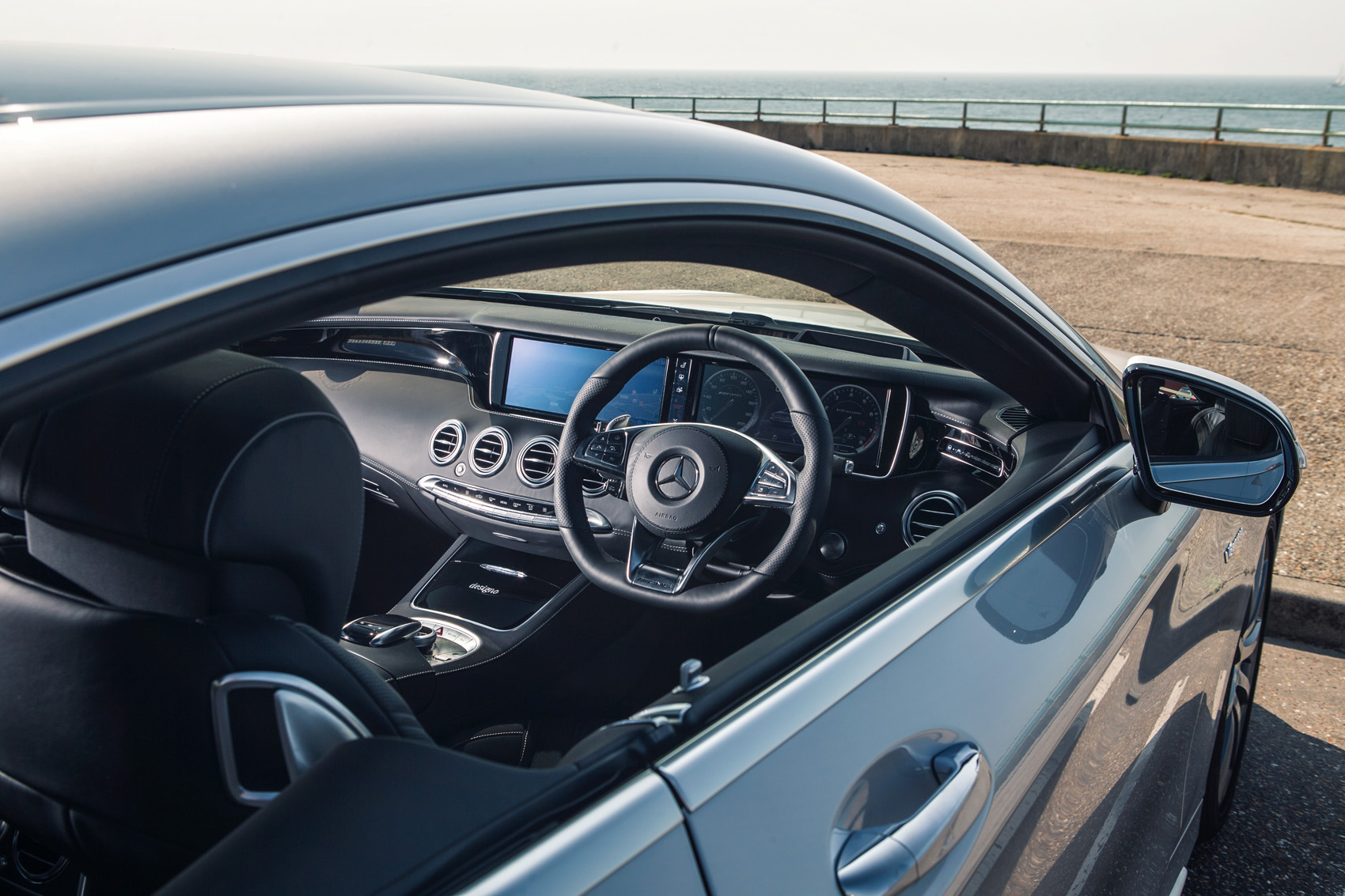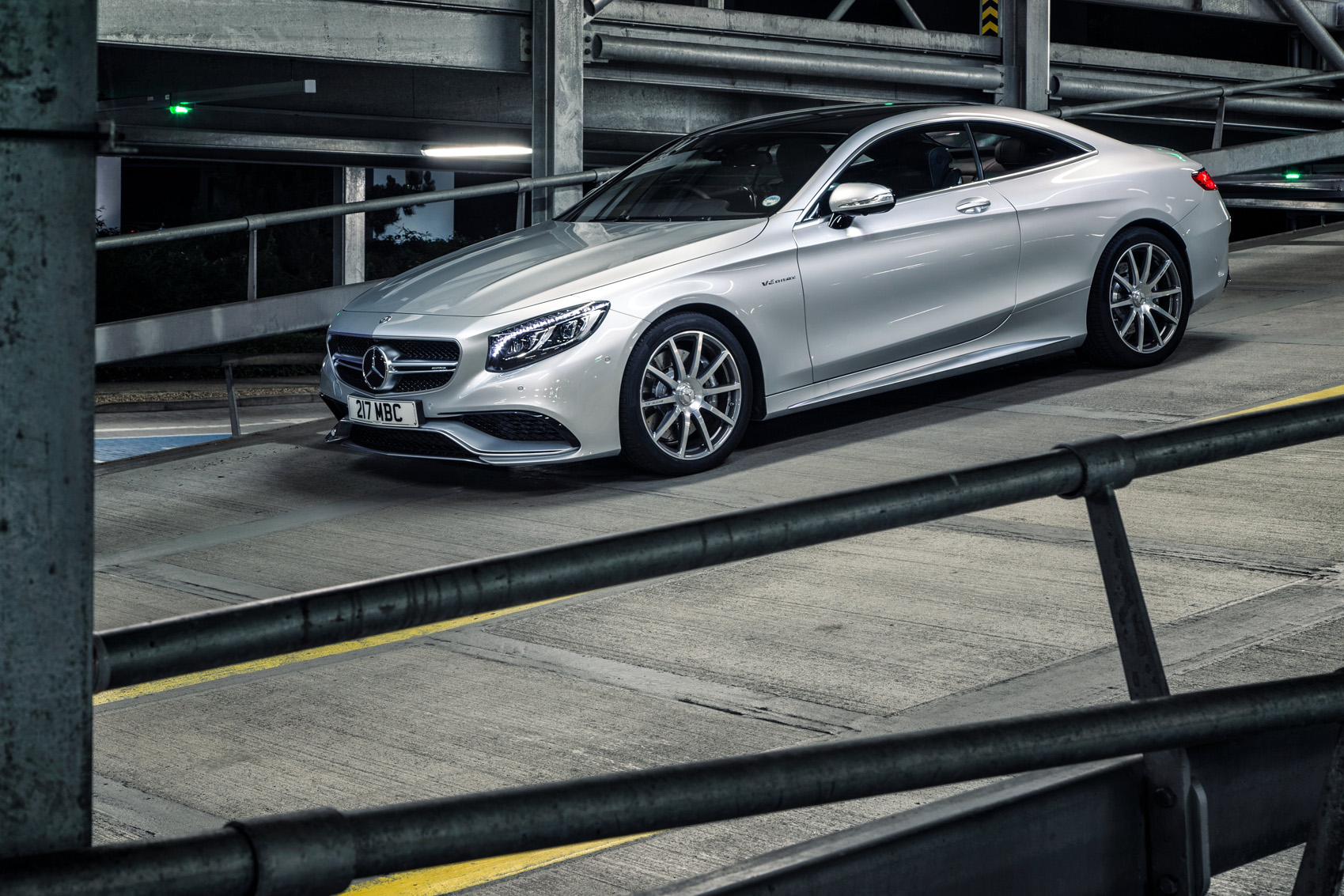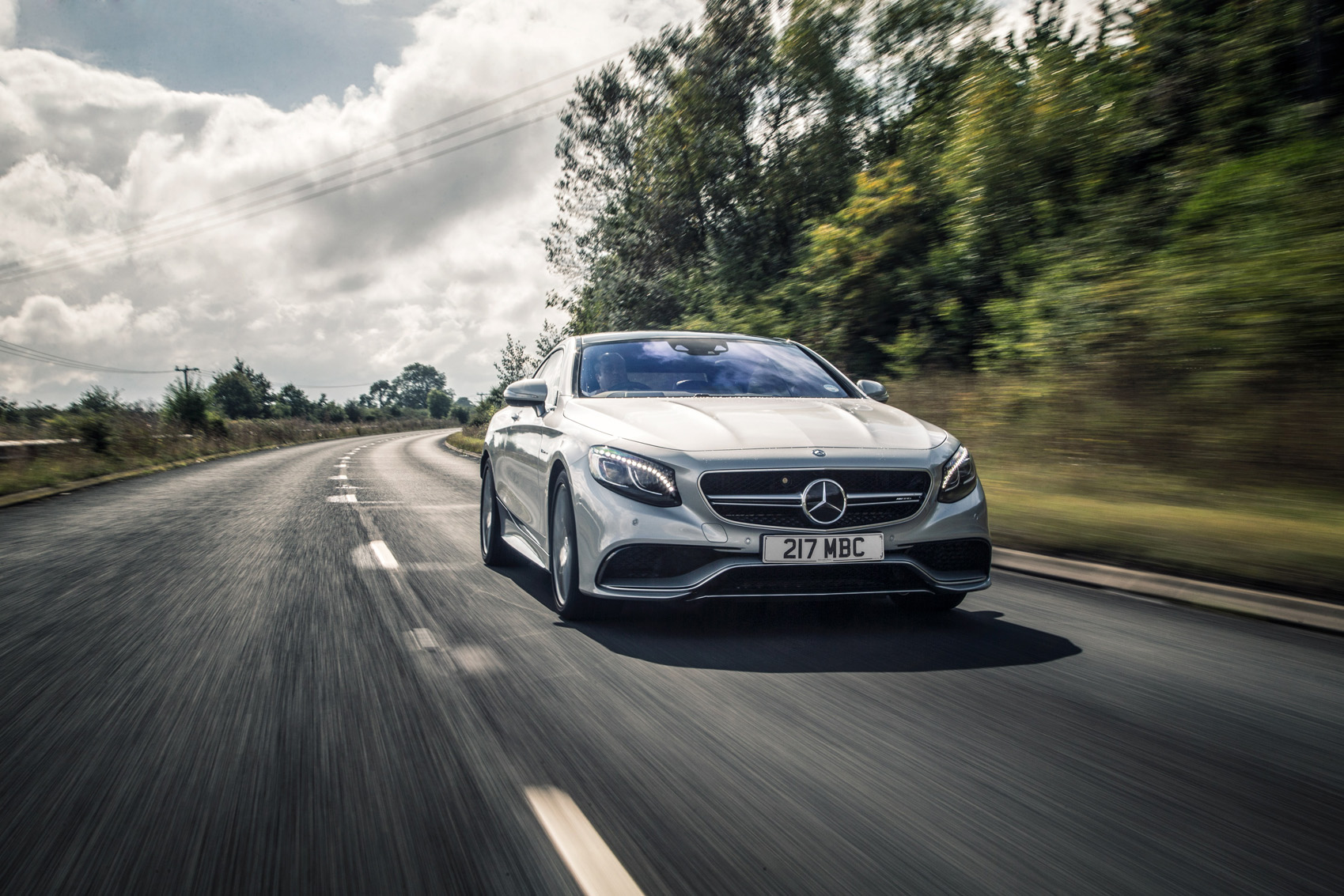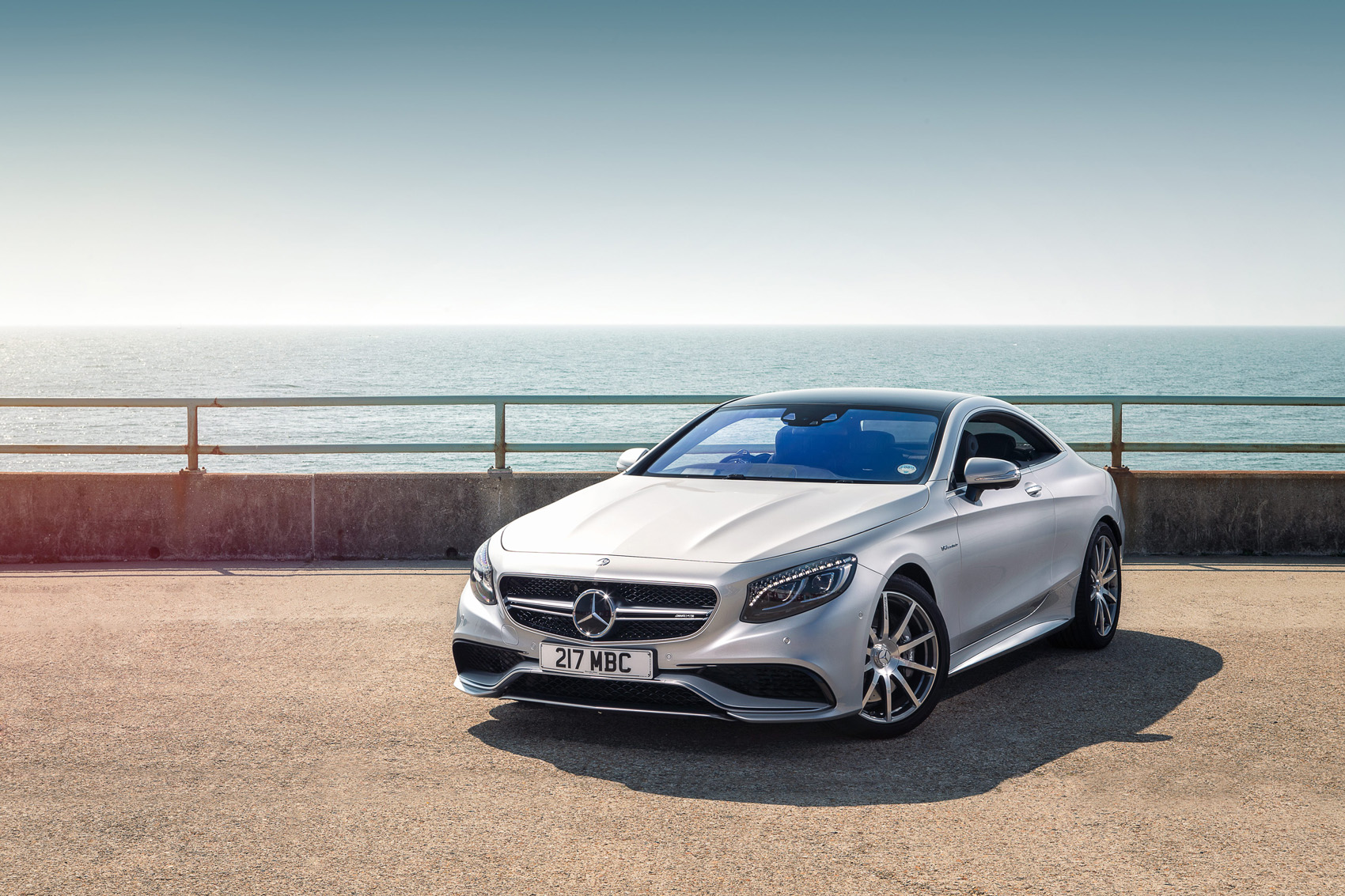The comfort, opulence and technical sophistication of the Mercedes-Benz S-Class coupé’s cabin are all outstanding. It’s a low car, but the relatively high-set driver’s seat makes sliding in easier than you’d expect.
Reaching back for your seatbelt can be a stretch in a long-doored 2+2, but it’s easy here thanks to a belt and ‘belt butler’ so well integrated into each B-pillar that they seem to come from nowhere.
In front of you is a purposeful-looking heated steering wheel with tactile leather grips, and behind it sits double-width instrumentation and multimedia LCD screens that stretch to the left way beyond the centreline of the car and, after dark, seem to float above the panel behind thanks to LED backlighting.
The materials aren’t quite at Bentley’s level, but they’re as close as anything. The high-contrast metallic trim of the air vents and door pulls looks fabulous – more fabulous, in a few places, than they feel.
Second-row cabin space is as generous as you’ll find in any two-door coupé, and it needs to be. Even larger adults won’t struggle to get comfy. The boot is generous, too.
All the cabin lacks – ironically, given how many surfaces (seats, armrests, wheel) are heated – is a bit of warmth. Profuse technology can be overwhelming and doesn’t on its own create the sense of occasion that grand tourers like this need.
Rolls-Royce and Bentley know how to make their latest gadgetry discreet and their cabins as inviting as they are rich. In the S 63 there are a few too many button consoles, a shade too much complication and perhaps a dedication to comfort, convenience and sophistication for its own sake, at the expense of distinguishing charm.
As for standard equipment the S 63 gets 19in alloy wheels, an aggressive bodykit, an AMG-tuned sports exhaust, adaptive sports suspension, a panoramic sunroof, keyless entry and AMG-specific sports seats, while there is also Mercedes' wide 12.3in Comand infotainment system complete with sat nav, Bluetooth, USB connectivity, DVD player and DAB radio.
Opt for the range-topping S 65, and not only do you get that monstrous V12 under the bonnet, but also 20in alloy wheels, a beefier bodykit, a Nappa leather upholstery, a surround sound Burmester audio system and adaptive LED headlights made up with 47 Swarovski crystals.
The standard audio set-up on the S 63 is a Burmester surround sound system, but our test car came with the optional kit, also by Burmester, which ups the ante to 24 speakers and 1520 watts.
It works through the same FrontBass bulkhead resonance chambers as found in the S-class saloon and SL roadster and sounds incredible, with low frequencies in particular reproduced very clearly at high volume.
The 12.3in central multimedia screen is filled entirely by the map when navigation is selected but is divided two-thirds to one-third in other modes — and it’s big enough that even the lesser section doesn’t look too small. With a TV tuner equipped, the front passenger can watch while the driver sees a separate image thanks to prism-based Splitview functionality.
Inputs can be made via the rotary controller, the neighbouring touchpad or via voice control. While the touchpad works better than those on some rivals, the easiest way to navigate menus is using the main rotor, while voice control works brilliantly for sat-nav programming.


